 |
And, as these spectacular examples show, they do! |
 |
Galaxy Mergers and Starbursts
Key points: Galaxy cannibalism; collisions and starbursts; mergers; implications of these processes for the evolution of galaxies
Because galaxies are relatively large compared to their separations, there is a non-negligible probability that they collide.
 |
And, as these spectacular examples show, they do! |
 |
Some collisions can result in the merging of the two colliding galaxies into one galaxy. This process is important early in the lives of many galaxies, including the Milky Way, and continues to this day.
 |
To the left is an artist's concept of how the Milky Way is stripping
gas from the Large and Small Magellanic Clouds. (from D. Parr, CSIRO, see http://antwrp.gsfc.nasa.gov/apod/ap980826.html) This process is probably the beginning of the Milky Way absorbing the Magellanic Clouds in a future merger. A similar fate may await many other small members of the Local Group, merging either with the Andromeda Galaxy or with the Milky Way. Here is an animation of how it will happen
|
 |
In addition, the Milky Way and the Andromeda galaxy are approaching
each other with a speed of 300,000 miles per hour.
Is this what the sky will look like at some future time? (From T. & D. Hallas, http://www.astrophoto.com/index.htm) |
Modeling Galaxy Collisions
We can model the collisions using computer simulations -- the laws of motion and gravity are all that's required..
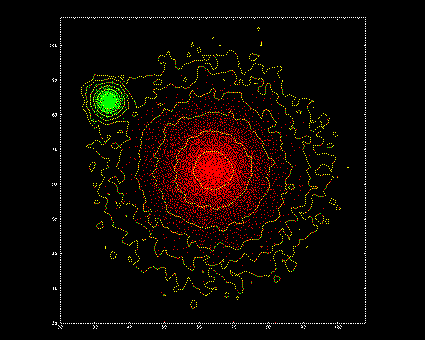 |
This simulation shows what happens when a small "green" galaxy collides with a large "red" one. The contours show the overall distribution of starlight, since in reality we have no convenient way to tell the stars that belonged to one from those that belonged to the other. In this case, both galaxies are ellipticals (without spiral disks). The smaller galaxy loses energy as a whole, while some of its stars are given high velocities and escape. As a result, it gets captured and spirals inward. |
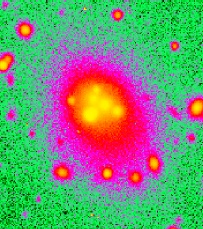 |
We see evidence of such collisions and mergers between elliptical galaxies. Some very large ellipticals at the centers of galaxy clusters have multiple nuclei, which can only result from the merging of galaxies. (central galaxy of cluster Abell 3827, from M. J. West) |
A number of galaxies have nuclei that are very bright in the far-infrared.
==> the galaxy is dubbed a "starburst galaxy"
What triggers a starburst?
Similar interactions may trigger active
nuclei ![]()
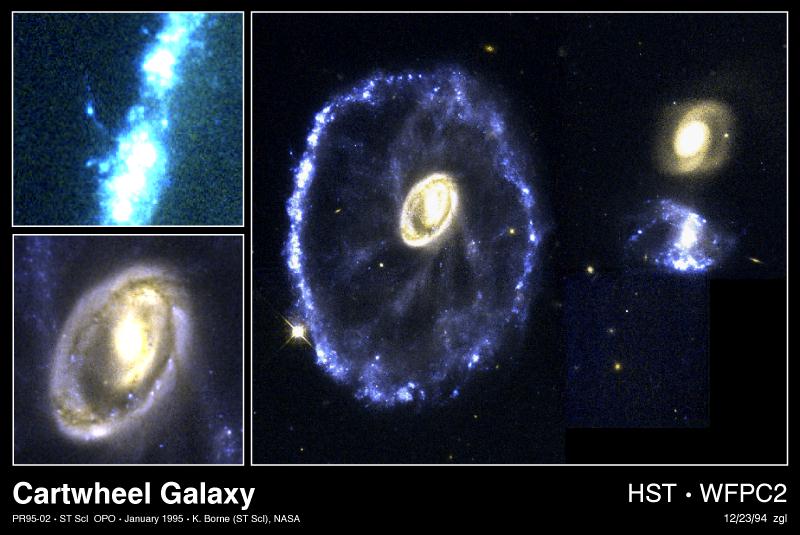 |
Here is the result of a head-on collision, leaving a large star forming ring and various pieces of the two galaxies.
|
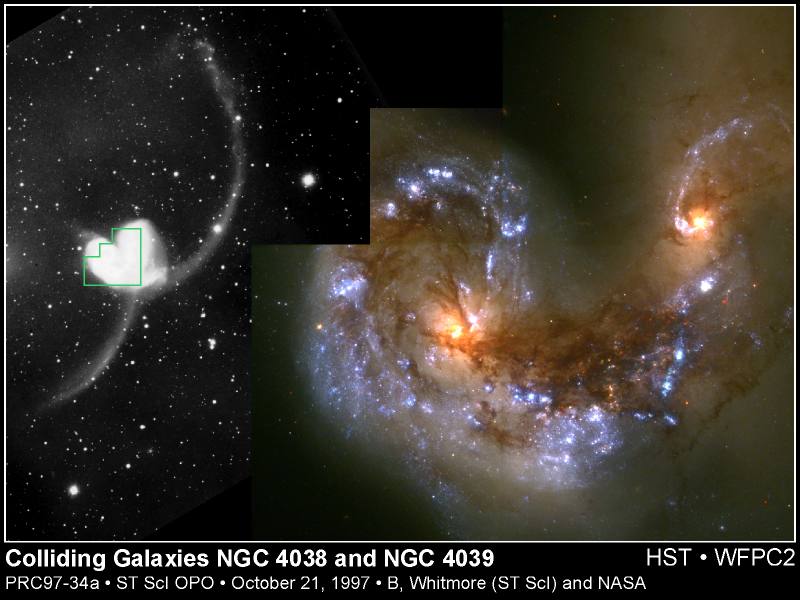 |
In this case (called, for obvious reasons, "the antennae"), stars have been stripped out of the galaxies and are streaming into space, while in the center there are huge HII regions, many enshrouded in dusty molecular clouds (that look red because of interstellar reddening). To the far left is a large scale view, with the region of the color image outlined. |
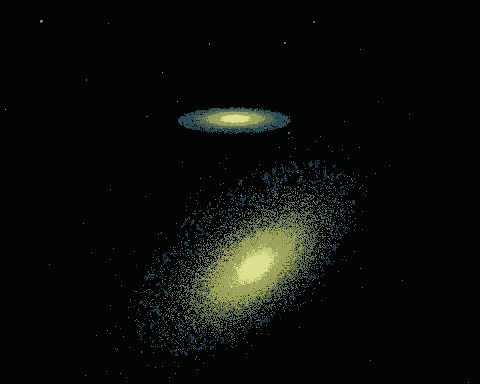 |
This simulation shows the collision of two disk galaxies, with
results similar to the antennae above. In collisions of this type, the bulk of both
galaxies tends to merge into a single new galaxy |
 |
Here is a 'still' of theoretical merging disk galaxies. The gas is colored red and the stars blue. The stars are distributed roughly as in the antennae, and the gas has been collected into dense concentrations that become the sites for vigorous star formation, also as seen in the antennae. |
Smash galaxies together yourself. Its fun! (your computer must be java applet capable, if so go to http://burro.astr.cwru.edu/JavaLab/GalCrashWeb/main.html)
Test your understanding before going on![]()
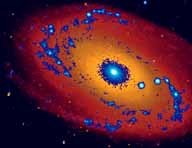
Ultraviolet view of M81 enhances spiral arms, from APOD, NASA, UIT: http://antwrp.gsfc.nasa.gov/apod/ap960713.html |

The Birth of Venus, by Sandro Botticelli |
|
Click to return to syllabus |
||
| Click to return to Lighting Up Spiral Arms | hypertext |
Click to go to Formation of Planetary Systems |